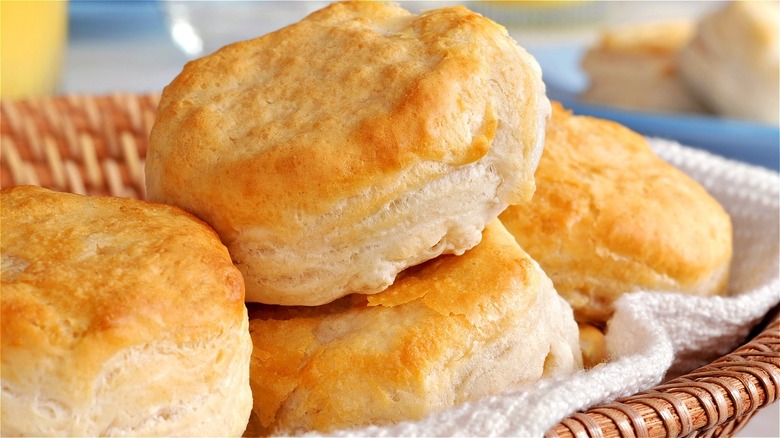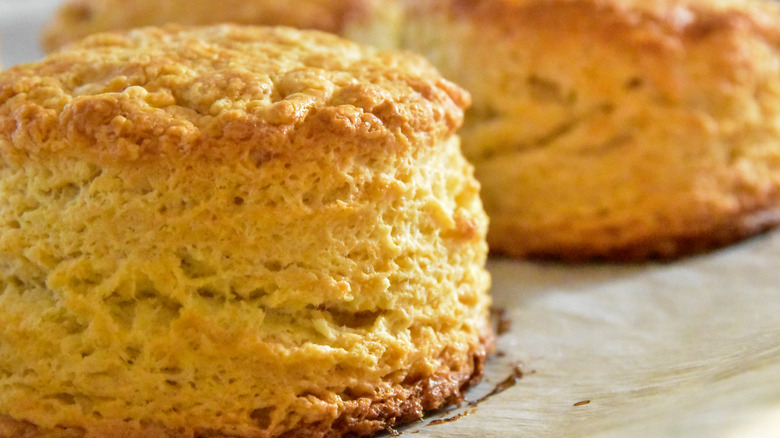Why Creating Air Pockets In Biscuits Is Crucial To Their Fluffiness
What meal can't be improved with a basket of warm, fresh-out-of-the-oven biscuits? Whether slathered in butter and jam, drizzled with honey, served next to crispy fried chicken, or split in half to make a decadent sandwich, biscuits are always welcome on our dining tables. Though not its top-selling item, Cracker Barrel serves over 200 million biscuits annually, proving how much Americans love their biscuits (via Business Wire).
While Southerners deserve credit for perfecting those delicate pillows of goodness, home bakers nationwide are rolling up their sleeves to bring some happiness into the kitchen. Owing a lot of credit to the White Lily brand of flour, a low-protein, low-gluten soft white winter wheat flour, biscuits are only as good as the ingredients and technique you use. Award-winning baker and cookbook author Cheryl Day said, "Biscuits are the croissants of the South. They're more complicated than you think, and they keep me busy every day" (via NPR).
Since White Lily isn't readily available outside the Southeast, bakers have developed flour blends or used unexpected flours to make biscuits. Along with buttermilk and their fat of choice (usually butter or lard), a whole lotta technique is used to achieve fluffy biscuits. Buttermilk or not, round or square, biscuit recipes are quick bread meant to be flaky and tender. Like most baking recipes, plenty of things can go wrong, but when done properly, few things are more delicious and worth the effort.
Use cold butter to create fluffiness
Cold butter is the key to fluffy, layer-upon-layer biscuits. According to Cooks Illustrated, butter is a combination of fat and water. Depending on the brand and whether it's salted or not, the water content ranges from 10% to 18%. As butter melts, the water evaporates, lifting the dough as the biscuits bake. Butter should be evenly distributed throughout the dough; however, too much handling will develop the gluten in the flour, making them tough (per All Recipes).
Author of "The Good Book of Southern Baking," Kelly Fields suggests grating the butter into the flour and freezing the biscuits before baking. The melting butter releases steam and creates air pockets throughout the pastry, giving the biscuit height and airiness (via NPR). Although challenging to work with, resist the urge to add more flour to wet dough, keeping it moist and sticky. Referred to as "slack dough," a high-hydration dough will create irregular size holes called "open crumb," resulting in airy biscuits. Too much flour or kneading will break down the butter making the biscuit denser.
Using a few fundamental techniques, a good buttermilk biscuit recipe, and a delicate hand, delicious biscuits can be whipped up in time for dinner or frozen and popped in the oven for breakfast, no matter what time you start your day.

